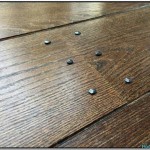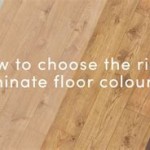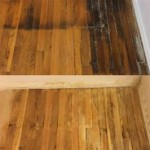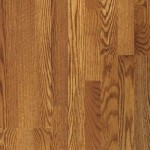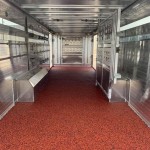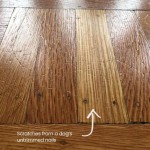Nail Down Bamboo Flooring Installation: A Comprehensive Guide
Bamboo flooring, with its stunning natural beauty and durability, has become increasingly popular for homeowners seeking a sustainable and stylish flooring option. While various installation methods exist, nail down installation offers a traditional and secure approach. This comprehensive guide will provide a step-by-step breakdown of the nail down bamboo flooring installation process, equipping you with the essential knowledge and techniques to achieve a professional and long-lasting result.
1. Preparation and Planning
A successful nail down installation relies heavily on proper preparation and planning. Begin by assessing the subfloor condition. Ensure it is level, free of any soft spots, and adequately supported. Uneven subfloors can lead to squeaking, uneven flooring, and premature damage. If necessary, leveling compound, plywood sheets, or shims can be used to address these issues.
Next, determine the layout of the bamboo flooring. Consider the room's size, shape, and potential obstacles like doorways, cabinets, or heating vents. Plan the direction of the planks to maximize the visual appeal and minimize waste. Carefully measure the room to determine the required quantity of bamboo flooring and ensure you have an adequate supply of nails, underlayment, and other necessary materials.
2. Installing the Underlayment
Installing an underlayment beneath the bamboo flooring provides a layer of cushioning, soundproofing, and moisture protection. Choose an underlayment specifically designed for hardwood or bamboo flooring, as it will offer optimal performance.
The underlayment should be laid out in a continuous sheet, ensuring a smooth and consistent surface for the flooring. Secure the underlayment to the subfloor using a staple gun or adhesive, following the manufacturer's instructions. Be sure to overlap the edges of the underlayment by several inches to prevent gaps or unevenness.
3. Acclimating the Bamboo Flooring
Bamboo flooring, being a natural material, is susceptible to expansion and contraction due to changes in humidity. Before installation, it is crucial to acclimate the bamboo planks to the ambient conditions of the room. This process typically takes 48 to 72 hours, allowing the planks to adjust to the temperature and humidity levels.
Store the bamboo flooring in the room where it will be installed, ensuring it is stacked flat and away from direct sunlight or heat sources. Acclimating the planks prevents warping, buckling, or gapping after installation.
4. Installing the First Row of Bamboo Flooring
Once the underlayment is in place and the bamboo flooring is acclimated, you can begin the installation process. Start by laying out the first row of bamboo flooring along one wall, leaving a small expansion gap between the planks and the wall. This gap allows for movement due to humidity fluctuations.
Use a nail gun specifically designed for hardwood flooring to secure the first row to the subfloor. Drive the nails at an angle, aiming for the tongue of each plank to ensure a tight and secure fit. Remember to consult the manufacturer's instructions for the recommended nail size and spacing.
5. Installing Subsequent Rows
With the first row securely in place, move on to installing the subsequent rows. Begin each new row with a staggered joint, ensuring that the ends of the planks do not align with the ends of the planks in the preceding row. This staggered pattern enhances the strength and stability of the flooring.
Continue to nail down the planks, maintaining the expansion gap between the planks and the walls. Remember to check for levelness and make any necessary adjustments using a level and tapping block. Use a combination of tapping and slight prying to ensure a tight fit without damaging the planks.
6. Cutting and Finishing
As you approach the end of the room, you may need to cut the bamboo planks to size using a circular saw or a miter saw. Make precise measurements and carefully cut the planks to fit the remaining space. Remember to leave the expansion gap along all walls and any other obstacles.
Once all the planks are installed, you can proceed with the finishing touches. This may involve installing transition strips, thresholds, or moldings to create a seamless transition from the bamboo flooring to other floor coverings. You can also apply a polyurethane finish to protect the bamboo flooring and enhance its natural beauty.
7. Maintenance and Care
Proper maintenance is crucial for preserving the beauty and longevity of your bamboo flooring. Sweep or vacuum the floors regularly to remove dust and debris. Avoid using harsh chemicals or abrasive cleaners, as these can damage the finish. Mopping is generally not recommended for bamboo flooring, but if necessary, use a damp mop with a pH-neutral cleaner.
Regularly check the floor for any signs of wear or damage. If any scratches or dings occur, a touch-up pen or a specialist repair kit can be used to restore the finish. It's also advisable to avoid placing heavy furniture directly on the bamboo flooring, as this can cause dents or indentations. The use of furniture pads is recommended to protect the floor surface.

Floating Floor Vs Nail Down Slaughterbeck Floors Inc

Nail Down Installation Strand Woven Bamboo

Nailing Down Bamboo Flooring Fine Homebuilding

Which Method Should I Use To Install My Engineered Wood Floor Tesoro Woods

Beginners Guide To Installing Bamboo Flooring The Company

Nail Down Bamboo Flooring Install

Beginners Guide To Installing Bamboo Flooring The Company

How To Install An Engineered Hardwood Floor

Floating Floor Vs Nail Down Slaughterbeck Floors Inc

Fixr Com Cost To Install Bamboo Flooring S
Related Posts



